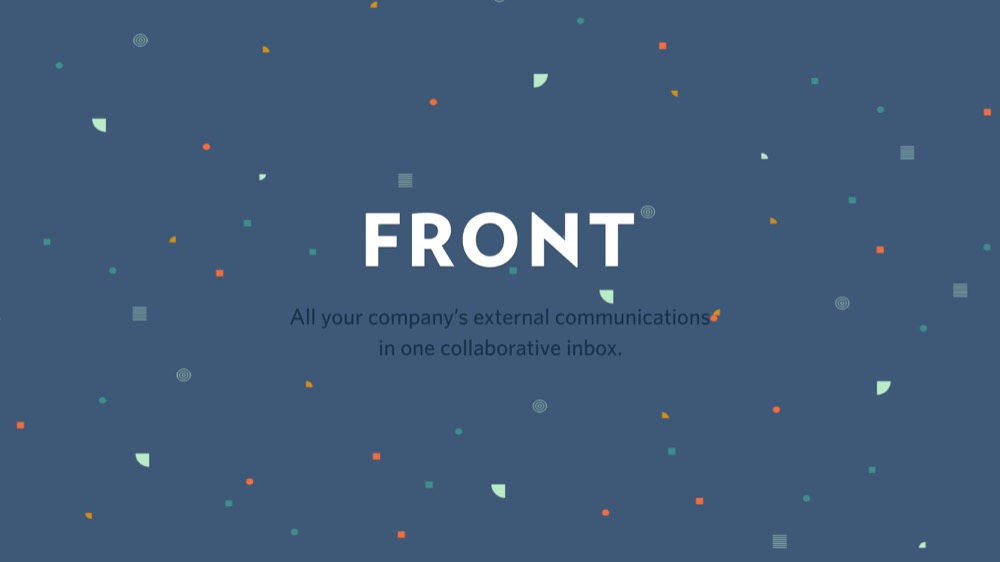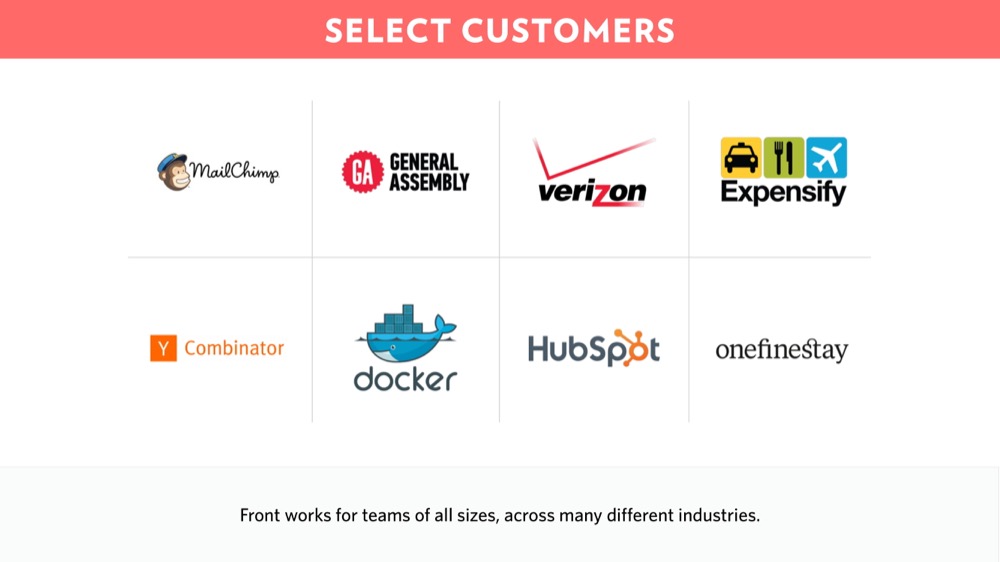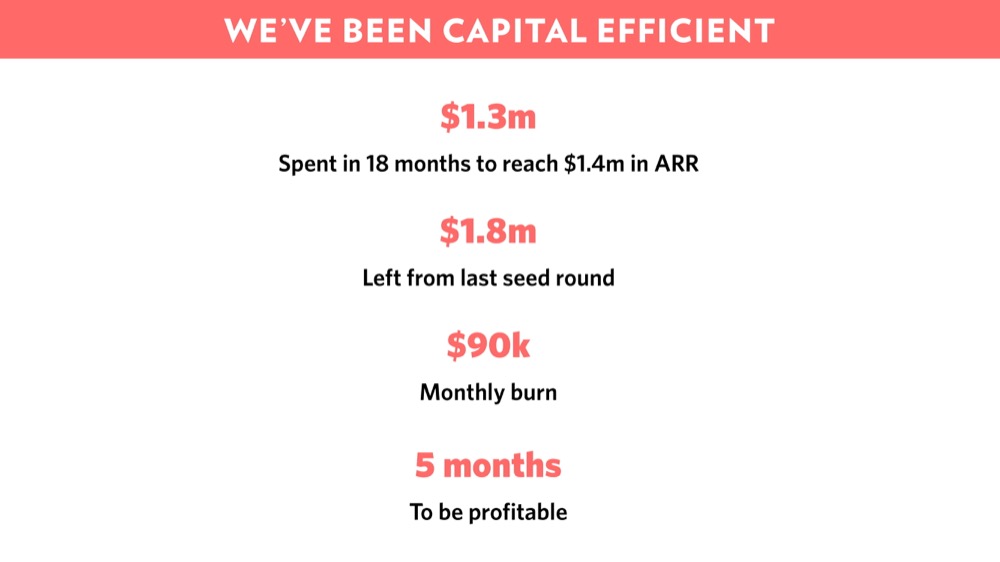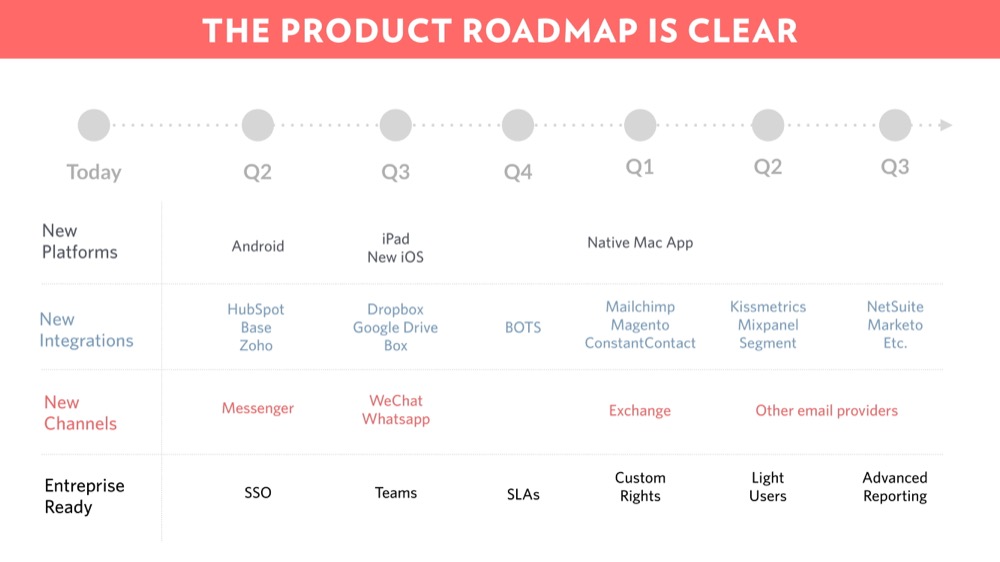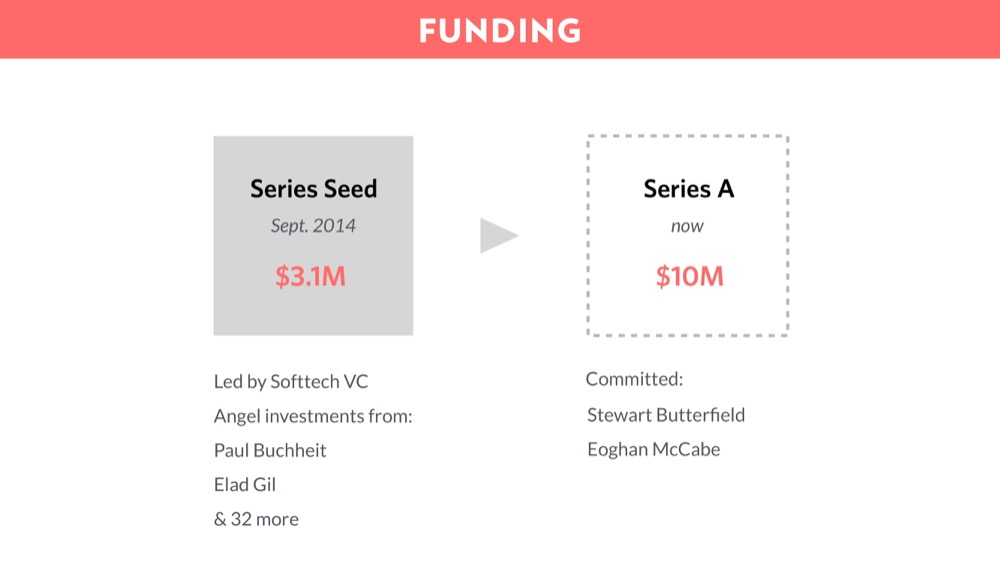Published on August 16, 2016 by:
This post was originally posted on Mathilde Colin’s medium (here).
–
2 months ago we announced our $10M series A for Front: exciting times!
I hadn’t put together a deck for our Seed round, so this time was a first for me. When I turned to Google to get some inspiration, I was very disappointed by the lack of examples available, especially in the SaaS space.I more or less had to start from a blank canvas.
Still, our series A went well, so I assume our final deck was at least acceptable; in the spirit of transparency I’ve decided to publish it, and share a few learnings on the process. Hopefully, it’ll help you raise your own round!
Two words on the process
Since we raised our Seed round, I’ve spent some time building relationships with VCs: Byron Deeter (Bessemer), Mamoon Hamid (Social Capital), Kevin Spain (Emergence), Aaref Hilaly (Sequoia), Terrence Rohan and Ilya Fushman (Index), Blake Bartlett (OpenView), Jonathan Ehrlich (Foundation Capital), Tomasz Tunguz (Redpoint). I knew whoever would invest in our A round would become our first board member, and we’d have to work together for years. Considering you can’t really get rid of a board member, I felt it was important to start getting to know them early.
In April of this year, I finally felt ready to raise our A: we had just reached $100k in MRR, with low churn and a clear roadmap. I casually let one of these VCs know about it during a routine meeting. He instantly suggested we meet with his team more formally, and I knew I had now switched to “fundraising mode”. I spent 90% of my days working on the deck, gathering data, making projections and constantly iterating based on investor feedback.
10 days later we had 3 term sheets. It might seem extremely fast, but I wasn’t doing anything else for the company. With only 15 employees at the time, the drop in productivity was more than perceivable, so I optimized for a short process instead. I accepted one of the term sheets and stopped taking meetings with other investors: I wanted to get back to work.
My learnings
- Keep building relationships, yet with a big caveat: VCs live and die on information (about your company, your market, your competitors, etc.), so they will never run out of questions to ask. Know when to stop answering.
- Choose carefully what metrics you talk about during those meetings. VCs will take note of everything you say and try to detect trends in your business. You want to decide which trends they get to detect.
- Raise or don’t raise. But don’t “kind of raise”: the more condensed the process, the better outcome for your company.
- Expect the process to be stressful, even if your business is doing very well — and don’t forget the “due diligence” that immediately follows, which is ten times worse.
Investors’ feedback on the deck:
Slides that were really strong:
- Capital efficient: the fact that we spent less than our ARR was a very strong point, one that I hadn’t anticipated. Turns out, not all VCs want you to spend all your cash in 12 months.
- Land and expand: on average, people spend 50% more after 12 months (net of churn), which apparently is very good in SaaS.
Slides that were really weak :
- Acquisition channels: most of our traffic has been organic, which is not good because the scalability is unclear.
- Projections: you should have a model ready and explain how you’re going to spend the money you raise — I did not have one.
Slides that I could have added:
- Data: I should have added the average amount of time spent on the app per user and per day, the number of DAUs, the number of MAUs, the evolution of the DAU/MAU ratio.
- Buyer: I did not spend enough time finding out who the typical buyer of Front is. Without this piece of information, outbound or paid acquisition cannot be successful.
